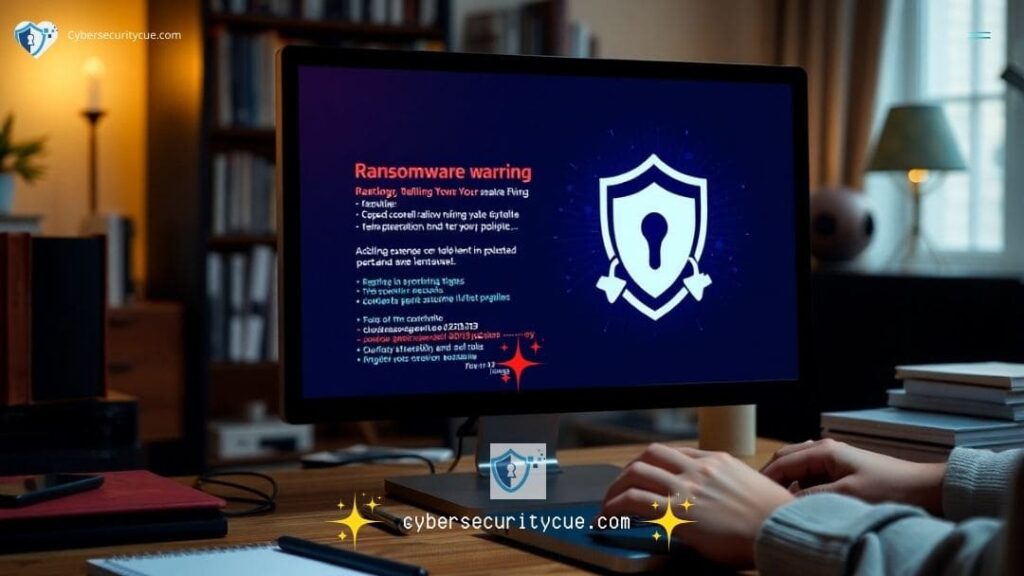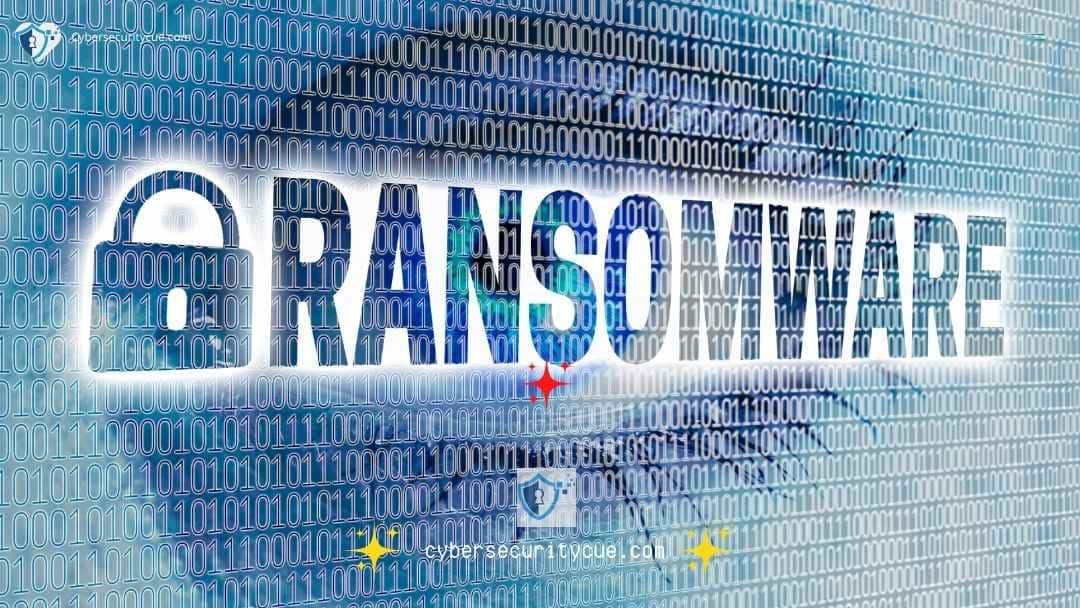Table of Contents
Many individuals underestimate the threat of ransomware, believing it won’t happen to them. However, as cybercriminals become more sophisticated, you must understand how these attacks work and what steps you can take to safeguard your digital life.
In this guide, you will learn practical techniques to protect your personal and professional data from extortion, ensuring you stay one step ahead of potential attackers.
Arm yourself with knowledge and take proactive measures today to defend against this pervasive threat.

Key Takeaways:
- Prevention strategies: Implementing robust cybersecurity measures, such as regular software updates and strong password policies, can significantly reduce the risk of falling victim to ransomware attacks.
- Data backups: Regularly backing up important files and storing them securely offline ensures that you can restore your data without paying a ransom if an attack occurs.
- Employee training: Educating employees about the tactics used by cybercriminals, including phishing scams, is imperative to creating a proactive defense against ransomware threats.
Understanding Ransomware
The world of ransomware can seem overwhelming, but understanding its mechanics helps you take proactive measures.
Ransomware is a form of malicious software designed to block access to your files and demand payment for their release.
It exploits various vulnerabilities, making it imperative for you to stay informed and protected against these digital threats.
What is Ransomware?
You may have heard of it before, but what exactly does it entail? Ransomware is a type of malware that encrypts your files or locks you out of your system, forcing you to pay a ransom to regain access.
The methods of transmission can vary, often arriving through phishing emails, infected websites, or malicious downloads. You need to be vigilant about your online activities to avoid falling victim.
Types of Ransomware
Different types of ransomware operate in unique ways, and knowing about them can significantly improve your defenses. Some common types include:
- Crypto ransomware: Encrypts files and demands payment for decryption.
- Locker ransomware: Locks users out of their devices entirely.
- Doxware: Threatens to release sensitive data unless paid.
- Scareware: Uses panic tactics to coerce users into paying.
- Ransomware-as-a-Service (RaaS): Allows others to rent ransomware tools.
Knowing the various types can help you stay alert and make informed decisions about security measures.
| Type of Ransomware | Description |
|---|---|
| Crypto Ransomware | Encrypts files and demands payment for decryption. |
| Locker Ransomware | Locks users out of their devices entirely. |
| Doxware | Threatens to release sensitive data unless paid. |
| Scareware | Uses panic tactics to coerce users into paying. |
| RaaS | Ransomware-as-a-Service allowing others to rent ransomware tools. |
With knowledge of these types, you can take appropriate steps to secure your digital assets. Each form of ransomware poses distinct risks, so it’s important to be informed about their specific characteristics. Here are additional types to consider:
- Mobile ransomware: Targets smartphones and tablets.
- Onion ransomware: Uses anonymity on the dark web.
- Fileless ransomware: Exploits system vulnerabilities without traditional files.
- Ransomware that targets backup files: Seeks to compromise backup solutions.
- Network ransomware: Spreads across networks, impacting multiple devices.
Knowing the range of ransomware threats will better arm you against potential attacks.
| Type of Ransomware | Description |
|---|---|
| Mobile | Targets smartphones and tablets. |
| Onion | Uses anonymity on the dark web. |
| Fileless | Exploits system vulnerabilities without traditional files. |
| Backup Targeting | Seeks to compromise backup solutions. |
| Network | Spreads across networks, impacting multiple devices. |
How to Recognize Ransomware Attacks
Some ransomware attacks employ deceptive tactics to infiltrate your system, making it vital for you to understand how to identify these threats.
Regularly monitoring your devices for unusual behavior and remaining vigilant about suspicious communications can help you catch these attacks early.
By knowing the signs to watch for, you can enhance your protection against potential digital extortion.
Signs of Infection
Now, it’s crucial to be aware of the signs that indicate ransomware may have infected your system.
Look for unexpected file encryption, demanding ransom notes appearing on your screen, and a sudden slowdown of your device. If you encounter any of these symptoms, take decisive action to protect your data.
Common Delivery Methods
It can infiltrate your system through various means, primarily designed to catch you off guard. Phishing emails, malicious downloads, and infected websites are common delivery methods that cybercriminals employ to spread this type of malware.
Another prevalent method involves attackers using malicious attachments in emails, often disguised as legitimate files or documents. When you open these attachments, they can execute code that allows it to install itself on your device.
Additionally, drive-by downloads occur when you unknowingly visit compromised websites that automatically download malware without your consent.
Staying cautious around unknown sources and verifying the legitimacy of files before opening them can significantly reduce your risk of encountering them.
Essential Tips for Prevention
Despite the growing threat of ransomware, there are proactive steps you can take to minimize your risk. Follow these imperative tips:
- Implement robust security software.
- Educate yourself and your team about phishing attacks.
- Limit user access to sensitive information.
- Regularly back up your data to secure locations.
You must prioritize these strategies for effective protection.
Regular Backups
Tips for regular backups include setting automatic schedules and using multiple storage solutions should be adhered to.
Ensure that your backup is not connected to your main network to prevent simultaneous encryption.
Check your backups regularly to confirm they are functional and complete.
Software Updates and Patches
Even the most secure systems are vulnerable without proper software updates. Ensure that you consistently install updates for your operating system and applications to close security gaps.
It is vital to enable automatic updates whenever possible and investigate security patches from software vendors promptly.
Cybercriminals often exploit known vulnerabilities, so staying current with updates can help thwart potential attacks. Check for updates regularly, even for software you may not use frequently, reinforcing your overall digital defense.
Factors Influencing Vulnerability
After identifying the elements that can make you susceptible to these attacks, it’s vital to recognize key factors that influence your vulnerability:
- Outdated software and systems
- Poorly configured security settings
- Lack of employee training and awareness
- Use of weak passwords
- Failing to back up data regularly
Perceiving these vulnerabilities can help you bolster your defenses against potential threats.
User Behavior
Now, understanding your behavior online can significantly impact your risk of falling victim to ransomware.
Many attacks exploit unsuspecting users who click on malicious links or download compromised files. Being vigilant about what you open and where you browse can mitigate these risks.
System Configuration
There’s a direct correlation between how you configure your systems and your vulnerability. Each setting plays a significant role in your overall security posture.
With proper system configuration, you can implement security measures like firewalls, antivirus software, and regular updates that create barriers against potential attacks.
Customizing security settings based on your needs while ensuring that all software is current helps to minimize risks.
Moreover, system access controls can limit exposure, protect sensitive data from unauthorized access, and further enhance your defense against these threats.
Steps to Take if Infected
All ransomware infections can be alarming, but swift action can mitigate the damage. First, isolate the infected device from your network to prevent the spread of malware.
Do not pay the ransom, as this does not guarantee you will regain access. Instead, assess the situation, backing up unaffected files if possible, and prepare for the next steps in recovery.
Immediate Actions
Infected devices should be immediately disconnected from the internet. This prevents further unauthorized access and stops the ransomware from communicating with its command and control servers.
You should also turn off shared drives and alert your IT department or a cybersecurity professional to begin containment and remediation efforts. Time is of the essence in securing your data.
Reporting the Incident
The next step involves reporting the incident to the appropriate authorities. This includes notifying local law enforcement and potentially the Federal Bureau of Investigation (FBI), which may assist in tracking the attack and preventing future occurrences.
Additionally, consider informing your organization’s cybersecurity team to enhance defenses against similar threats.
Reporting the event not only helps to initiate an investigation but also enables your organization to learn from the incident. It contributes to broader efforts to understand and combat ransomware trends and assists in coordinating responses.
Engaging with law enforcement may also provide additional resources for recovery, making it a vital step in your strategy.
Resources and Tools for Protection
Keep your digital assets safe by utilizing a variety of resources and tools designed to protect against ransomware.
Investing in reliable security software, regularly updating your system, and creating backups of your important files can significantly reduce your risk of falling victim to digital extortion.
Employing these strategies will fortify your defenses and help you navigate the increasingly dangerous digital landscape.
Anti-Ransomware Software
With the right anti-ransomware software, you can proactively safeguard your system against attacks. Look for programs that feature real-time scanning, behavioral detection, and automatic backups.
These tools not only identify and neutralize threats before they cause damage but can also restore your files in the event of an attack, providing you peace of mind as you conduct your daily activities online.
Security Best Practices
There’s no substitute for adopting solid security best practices. Regularly updating your software, using strong passwords, and being vigilant about phishing attempts are vital steps you can take to minimize your vulnerability.
It’s also imperative to educate yourself about the latest threats and how to recognize them, as staying informed empowers you to make smarter decisions in your digital interactions.
Another effective method to enhance your security is to implement multi-factor authentication on sensitive accounts.
This added layer of protection requires not only your password but also a second form of verification, making it more difficult for cybercriminals to access your information.

Additionally, regularly reviewing your online privacy settings and being cautious about the personal information you share can further protect you from potential attacks.
To wrap up
Ultimately, understanding ransomware and implementing effective protection strategies are vital in safeguarding your digital life.
By keeping your software updated, regularly backing up your data, using strong passwords, and educating yourself about phishing tactics, you can significantly reduce your risk of falling victim to digital extortion.
Stay vigilant, and prioritize your online security to navigate the ever-evolving cyber landscape confidently.
FAQ
What is ransomware, and how does it work?
Ransomware is a type of malicious software designed to block access to a computer system or files, typically by encrypting them until a sum of money (the ransom) is paid. Once the system is infected, users receive a ransom note demanding payment, usually in cryptocurrency for anonymity.
It often spreads through phishing emails, compromised websites, or unpatched software vulnerabilities, making it imperative to maintain good digital hygiene and up-to-date security measures.
What steps can I take to protect myself from ransomware attacks?
Protecting yourself from ransomware involves a multi-layered approach.
First, ensure that your operating system and software are updated regularly to patch potential vulnerabilities.
Secondly, employ reliable antivirus and anti-malware programs, and set them to perform regular scans.
Additionally, back up your important files frequently using both local and cloud storage options, as having backups can diminish the impact of a ransomware attack.
Educating yourself and others about recognizing phishing attempts and suspicious links is also key in preventing ransomware infections.
What should I do if I become a victim of ransomware?
If you fall victim to ransomware, the first course of action is to disconnect from the internet to prevent the further spread of the infection.
Do not pay the ransom, as it does not guarantee the recovery of your files and can encourage further attacks. Instead, report the incident to local authorities and seek assistance from cybersecurity professionals.
Assess whether any of your backups are valid and accessible before attempting to restore your data. If professional help is available, they might have the tools to decrypt your files or help you navigate the recovery process safely.





